The art of paper folding and the science of protein folding
In a world where we glorify busyness, slowing down can be a challenge. In recent months, an invisible enemy has forced many of us to slow down and shut down our usual routines. As the parent of a teenager, I’ve had my own set of challenges. Kids, especially teens, need to be engaged, motivated and entertained.
When we were brainstorming ways to make the most of our time during the spring lockdown, an origami jumping frog on the internet caught our attention. We were drawn to the simplicity of origami; all we needed was paper and some basic folding skills. We turned to what we thought was the only reliable source to help us learn about it — YouTube — and found numerous tutorials on how to fold paper. These videos got my teenager hooked. Our floors soon were covered in large sheets of paper as we learned about precreasing, folding, collapsing and all sorts of other origami tidbits.
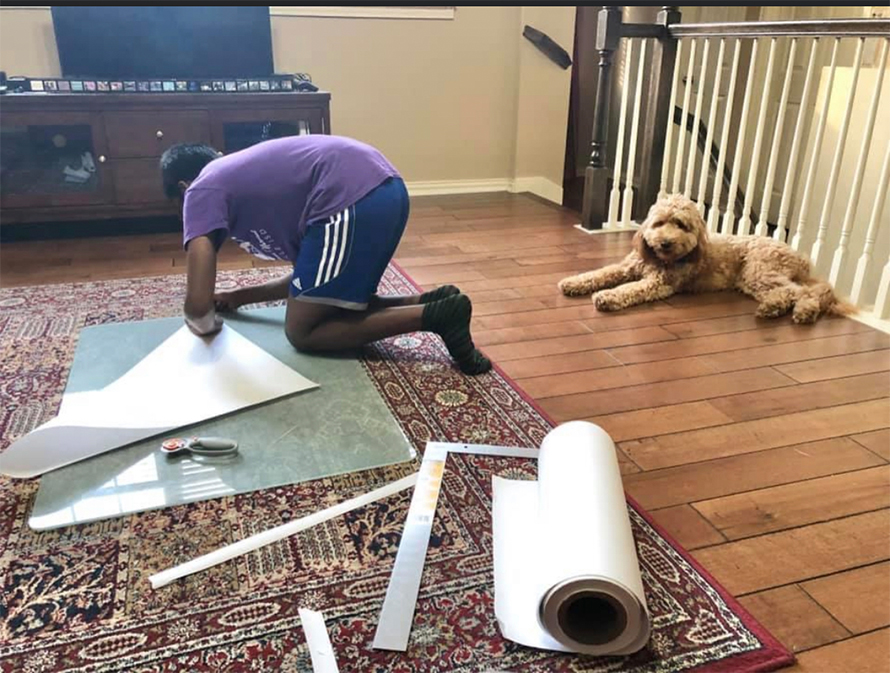
This activity has kept my son Nikhil engaged. He spends hours trying to get accurate measurements on a square of paper; a fraction of an inch off will make him start all over again. He insists that the success of an origami structure lies in the precision with which the paper is measured and folded. Watching him meticulously measure, fold, collapse and shape paper made me think of our own biological origami and the science of protein folding. Proteins, the essential building blocks of life, can only function if they are folded properly. This idea piqued my scientific curiosity and I wanted to explore the similarities between paper folding and protein folding.
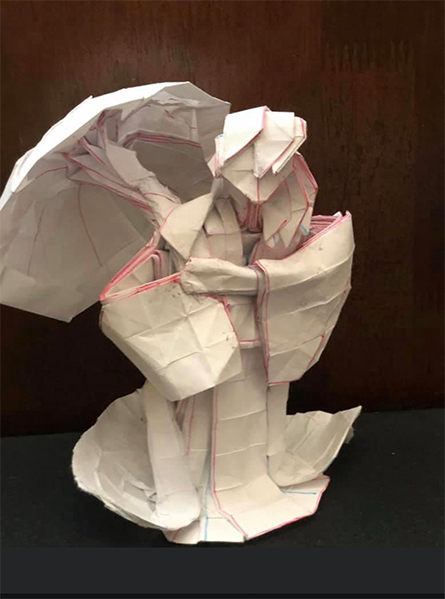
A brief history of origami
Origami, the ancient Japanese art of paper folding, has entertained generations with its beautiful simplicity. Origami used to be called orikata. The word “origami” comes from two Japanese words; “oru” means “to fold,” and “kami” means “paper.” Paper was invented in China around 105 A.D., and Japanese origami originated when Buddhist monks carried paper from China to Japan sometime in the sixth century. Origami paper was difficult to make and therefore expensive. In Japan, handmade paper was a luxury used only on specific religious occasions.
Before the invention of paper, people did recreational folding with materials such as cloth or leather. As with most art forms, new techniques have evolved. Origami is no longer folded exclusively with origami paper. People use printer paper, wrapping paper, old newspapers, junk mail and even scrapbook paper. Unlike traditional origami, modern variations involve cutting, shaping and even using glue to make the structure more sturdy and stable.
Proteins: Our own biological origami
Proteins, the building blocks of life, also are folded. However, in the case of proteins, they fold spontaneously based on a series of codes in the form of amino acids, which are akin to the crease patterns and folds of origami. This biological origami depends on the correct genetic code, accurate assembly of amino acids and the precise folding of the amino acids into a functional protein.
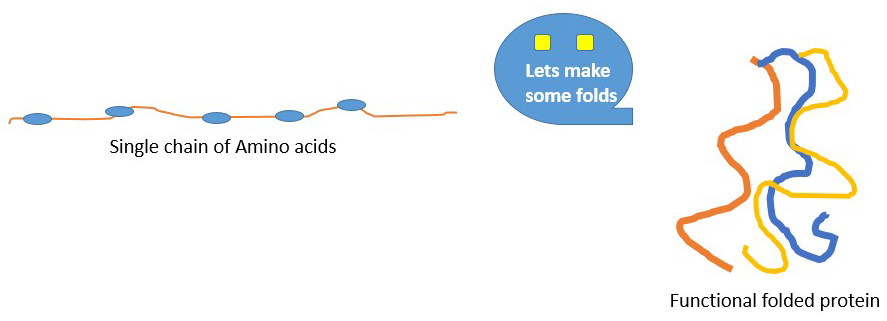
Initially, proteins are synthesized as a long chain of amino acids. The sequence of amino acids and their properties determine how the proteins are folded. Proteins are at the core of all the biological and molecular machinery in our bodies. They must be synthesized, assembled and folded accurately to perform the critical functions that keep us alive.
Misfolded, unfolded or inaccurately folded proteins are nonfunctional, and they form a sticky, gooey mess. The sticky, misfolded, obsolete protein becomes a hindrance to our bodies’ normal functioning.
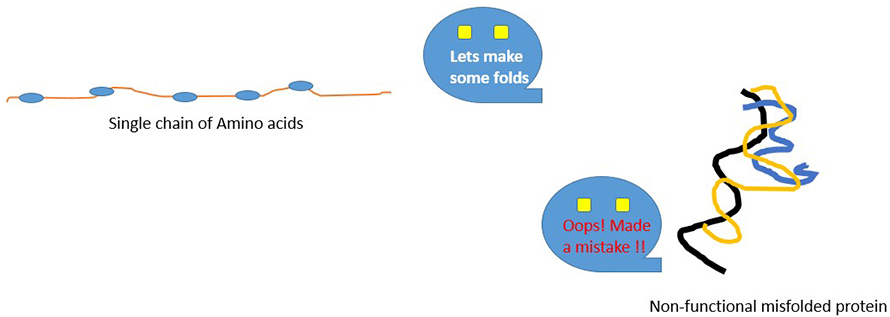
The yin and yang of folds
Each type of fold in origami has its own distinct pattern and purpose. For example, the popular origami crane starts with a bird base. This structure has a square base and petal folds. If we make a mistake in one of the folds or switch a petal fold for a mountain fold, we will end up with an unstable, inaccurate and perhaps disfigured crane.

Robert Lang, an origami pioneer, creates incredible design patterns from plain paper. I find it fascinating to look at his crease patterns and envision how one particular diagonal crease will be folded into the tentacles of a bug, or how one mountain fold or valley fold will become the base of a 3D structure.
Similarly, our DNA carries crease patterns in the form of a genetic code that determines the type and sequence of amino acids. Like origami crease patterns and folds, our biological origami depends on folding the correct sequence of amino acids into pristine functional proteins. A group of disorders known as proteopathies occur when the proteins are misfolded due to incorrect assembly of the amino acids, genetic changes or abnormal folding patterns. In neurodegenerative diseases such as Alzheimer’s and Parkinson’s disease, the proteins are misfolded and become nonfunctional. Knowing the structure and folding patterns of proteins is vital to understanding their functions, and this in turn will help in designing therapeutics for these diseases.
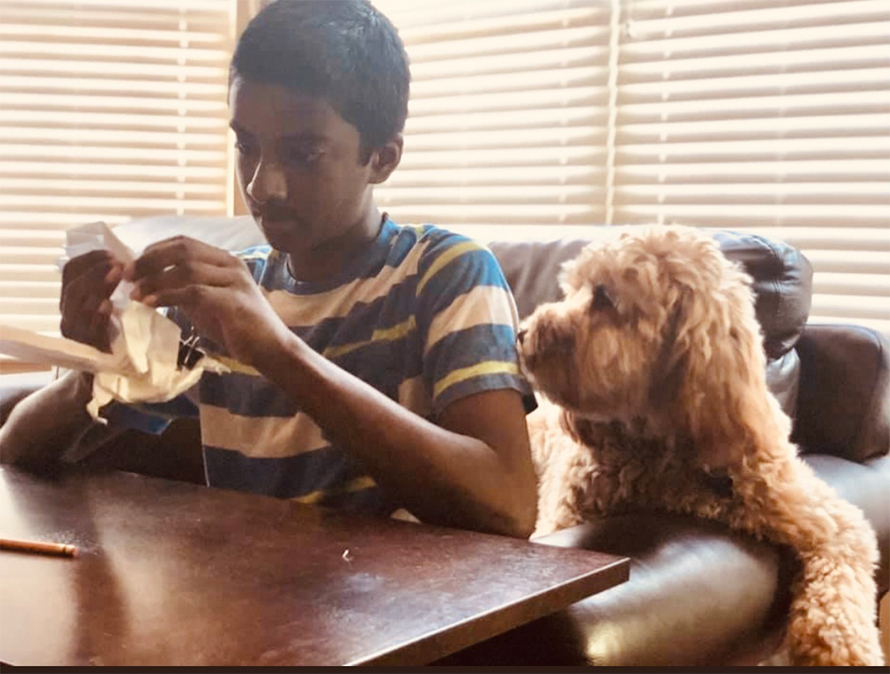
Folds of life and art
A protein starts off as a flat sheet before being folded into a 3D structure. The protein sheet is similar to origami paper. Both need to be measured and folded accurately. Precision, perfection and patience are of utmost importance in creating the simple yet beautiful, pristine folds of life and art.
As scientists continue to explore protein folding, and while Nikhil and I experiment with the art of paper folding, I can’t help but wonder if origami is a mirror reflecting the invisible folds of our life.
Enjoy reading ASBMB Today?
Become a member to receive the print edition four times a year and the digital edition monthly.
Learn moreGet the latest from ASBMB Today
Enter your email address, and we’ll send you a weekly email with recent articles, interviews and more.
Latest in Opinions
Opinions highlights or most popular articles

How pediatric cataracts shaped my scientific journey
Undergraduate student Grace Jones shares how she transformed her childhood cataract diagnosis into a scientific purpose. She explores how biochemistry can bring a clearer vision to others, and how personal history can shape discovery.

Debugging my code and teaching with ChatGPT
AI tools like ChatGPT have changed the way an assistant professor teaches and does research. But, he asserts that real growth still comes from struggle, and educators must help students use AI wisely — as scaffolds, not shortcuts.

AI in the lab: The power of smarter questions
An assistant professor discusses AI's evolution from a buzzword to a trusted research partner. It helps streamline reviews, troubleshoot code, save time and spark ideas, but its success relies on combining AI with expertise and critical thinking.

How AlphaFold transformed my classroom into a research lab
A high school science teacher reflects on how AI-integrated technologies help her students ponder realistic research questions with hands-on learning.

Writing with AI turns chaos into clarity
Associate professor shares how generative AI, used as a creative whiteboard, helps scientists refine ideas, structure complexity and sharpen clarity — transforming the messy process of discovery into compelling science writing.

Teaching AI to listen
A computational medicine graduate student reflects on building natural language processing tools that extract meaning from messy clinical notes — transforming how we identify genetic risk while redefining what it means to listen in science.

